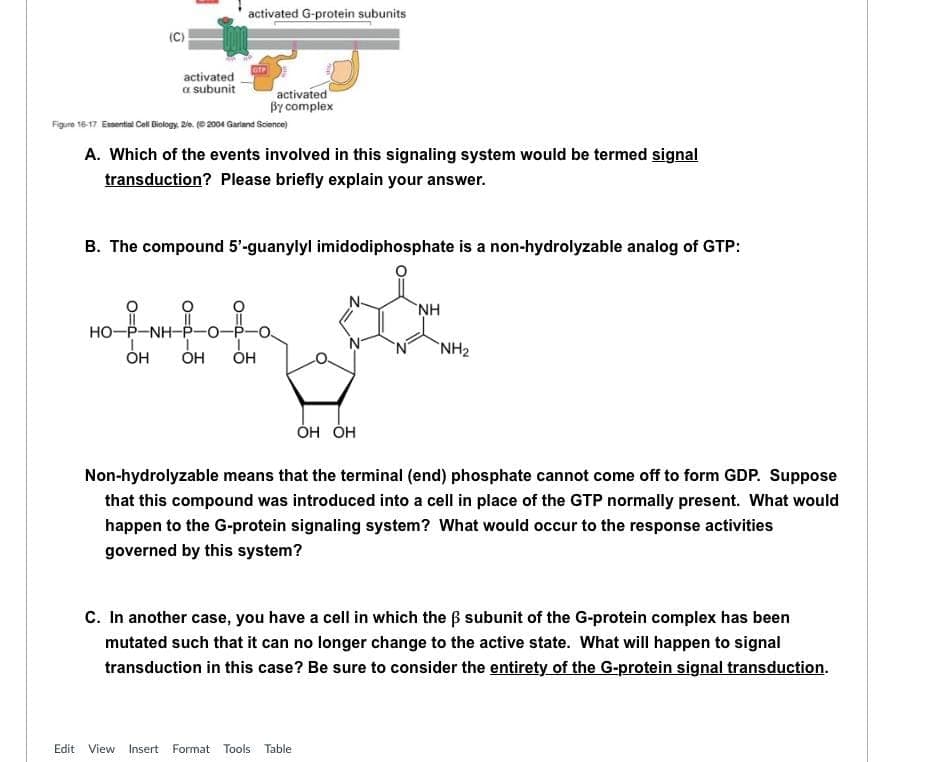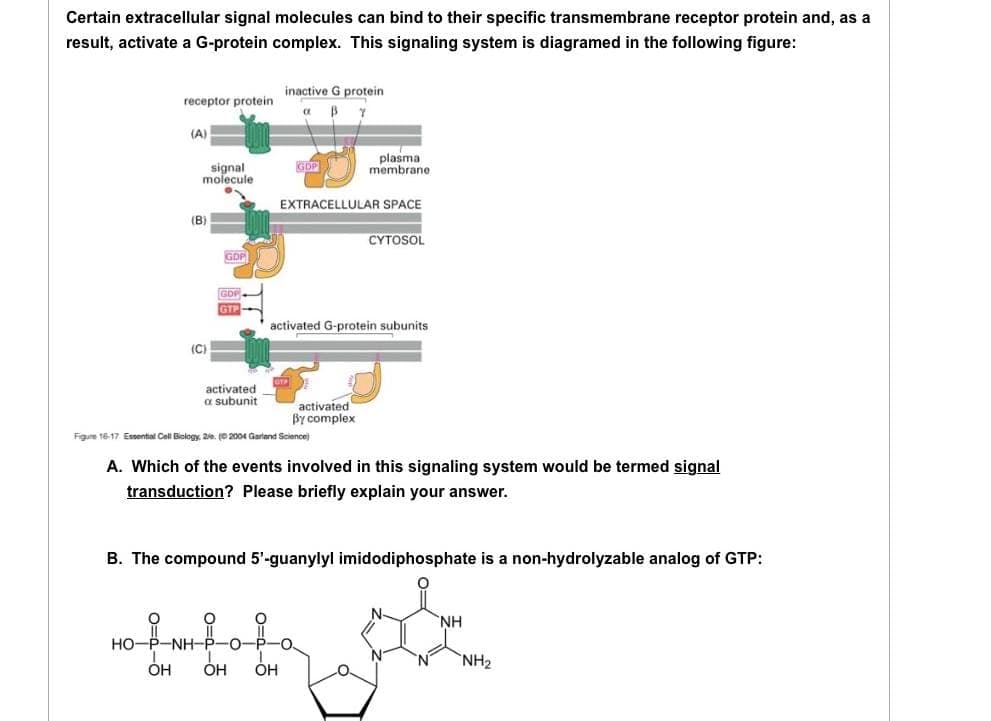A. Which of the events involved in this signaling system would be termed signal transduction? Please briefly explain your answer. B. The compound 5'-guanylyl imidodiphosphate is a non-hydrolyzable analog of GTP: HỌ-P-NH -0- OH OH OH OH OH ΝΗ NH₂ Non-hydrolyzable means that the terminal (end) phosphate cannot come off to form GDP. Suppose that this compound was introduced into a cell in place of the GTP normally present. What would happen to the G-protein signaling system? What would occur to the response activities governed by this system? C. In another case, you have a cell in which the ß subunit of the G-protein complex has been mutated such that it can no longer change to the active state. What will happen to signal transduction in this case? Be sure to consider the entirety of the G-protein signal transduction.
Gene Interactions
When the expression of a single trait is influenced by two or more different non-allelic genes, it is termed as genetic interaction. According to Mendel's law of inheritance, each gene functions in its own way and does not depend on the function of another gene, i.e., a single gene controls each of seven characteristics considered, but the complex contribution of many different genes determine many traits of an organism.
Gene Expression
Gene expression is a process by which the instructions present in deoxyribonucleic acid (DNA) are converted into useful molecules such as proteins, and functional messenger ribonucleic (mRNA) molecules in the case of non-protein-coding genes.
please please do it urgently
its urgent


Step by step
Solved in 2 steps


